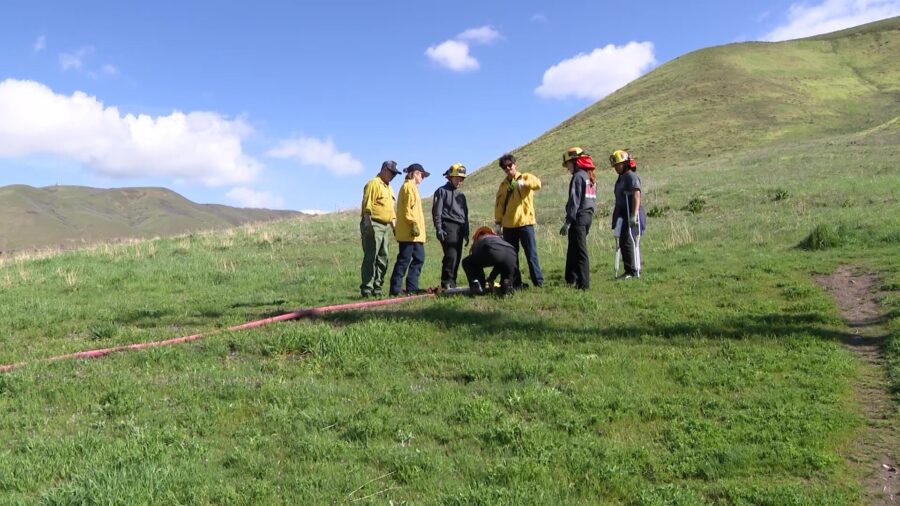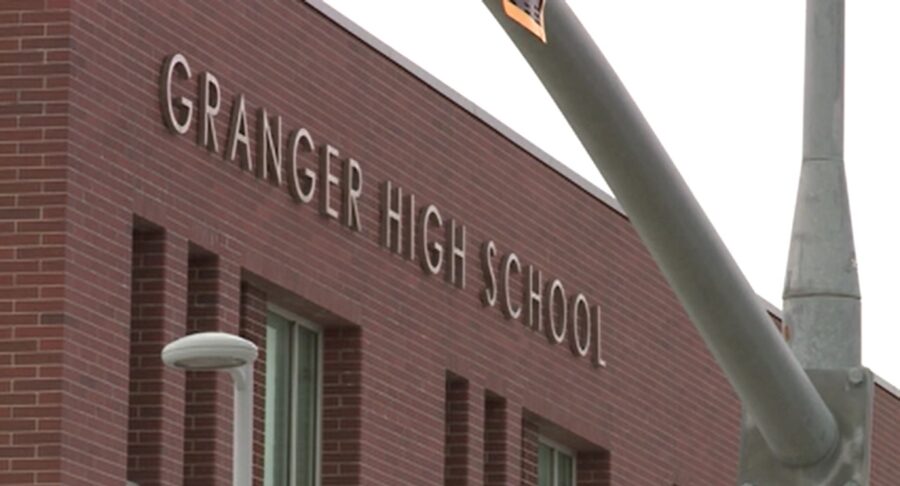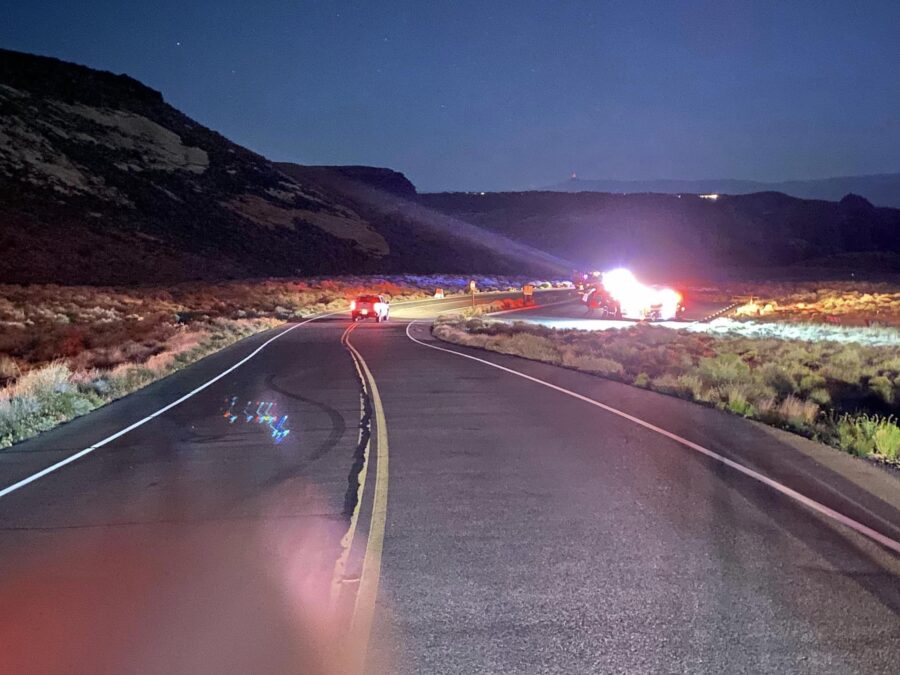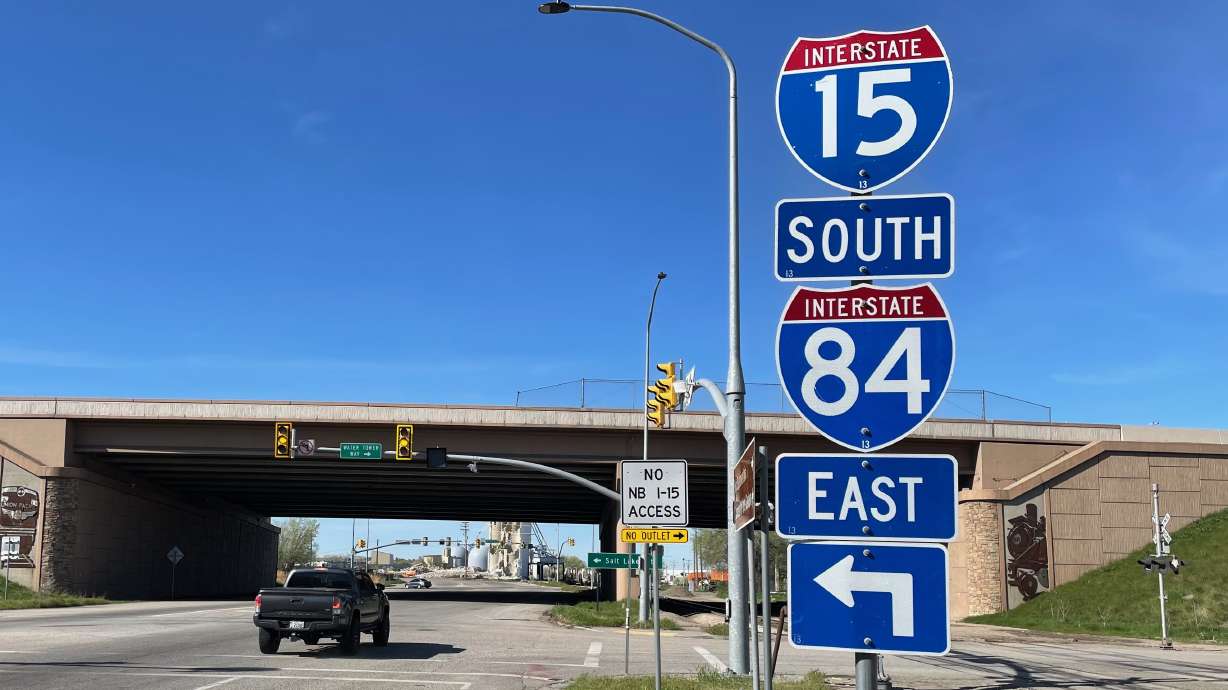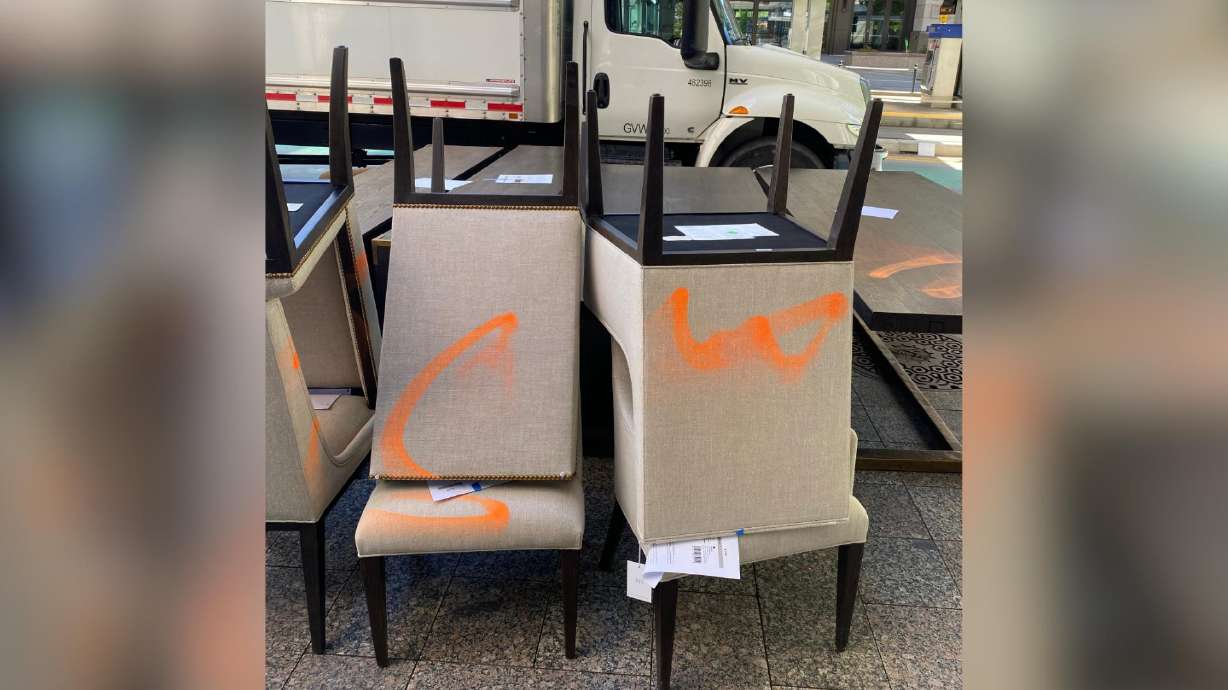U of U study shows an increase of anti-Asian hate tweets after the COVID pandemic
May 28, 2022, 9:31 PM

(Photo by Bethany Clarke/Getty Images)
(Photo by Bethany Clarke/Getty Images)
SALT LAKE CITY – Anti-Asian tweets increased across the United States during the first year of the pandemic, according to a University of Utah study.
The study found that anti-Asian hate language surged between January and March 2020 in the U.S.
It identified two indicators of the spikes; the first at the end of January when COVID-19 came to the U.S. and the second in mid-March when President Donald Trump called the virus the “Wuhan flu” and “Chinese virus.”
Eventually, the flow of anti-Asian tweets slowed, but it’s still higher than before the pandemic.
“We can interpret that as, once the hate is up, then the hate persists. At least as long as our study period,” said Alexander Hohl, assistant professor at the U of U and lead author of the study.
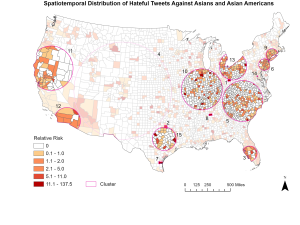
The spatial distribution of hateful tweets against Asians and Asian Americans: United States, November 2019-May 2020. (Credit: Hohl et al. (2022) American Journal of Public Health)
The study also geolocated which areas of the U.S. where these anti-Asian tweets mostly happened.
Researchers purchased 4,234,694 geolocated tweets from Twitter, searched for tweets that fit their criteria, and placed them on the map.
The criteria for each tweet are:
- the tweet is in English,
- was sent within the study period,
- located in the contiguous U.S. and included COVID-19 language (coronavirus, SARSCoV2, etc.),
- and contained additional keywords related to anti-Asian hate (kungflu, Wuhanvirus, etc.)
The study shows the strongest cluster was in Ross County, Ohio, “where the proportion of hateful tweets was about 300 times higher than the rest of the country.”
However, the study couldn’t find any identifiable patterns for these tweets across the county.
“In American culture, we perceive Asians as the model minority, right? They tend to do well academically and make money, or at least that’s our perception,” said Richard Medina, associate professor at the U of U and co-author of the study. “Oftentimes, Asians in America are overlooked as targets of hate speech or hate crimes. But COVID-19 brought that out.”
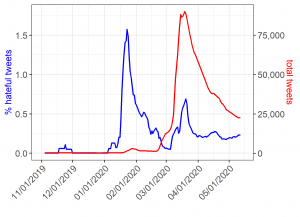
Anti-Asian sentiment in COVID-19-related tweets over time. The red line is the daily total number of tweets in the study’s dataset, and the blue line is the proportion of tweets that express anti-Asian sentiment. (Credit: Alexander Hohl)
Researchers hope to use their research to protect marginalized communities from racist hate crimes.
According to the STOP AAPI Hate Initiative, an online tool for self-reported hate incidents, there were 9,000 hate incidents during the first of COVID-19.
“During the onset of COVID, there were reports of hate crimes committed on Asians and Asian Americans in the U.S,” said Hohl. “We think that warrants a research perspective.”
Researchers are planning to map the time and place where hate crimes have occurred and describe a “hateful place.”
“The hope is that we can use hate in social media as a predictor of hate on the streets to use as an alarm for communities and public health officials to get the help and protection they need,” said Medina.


